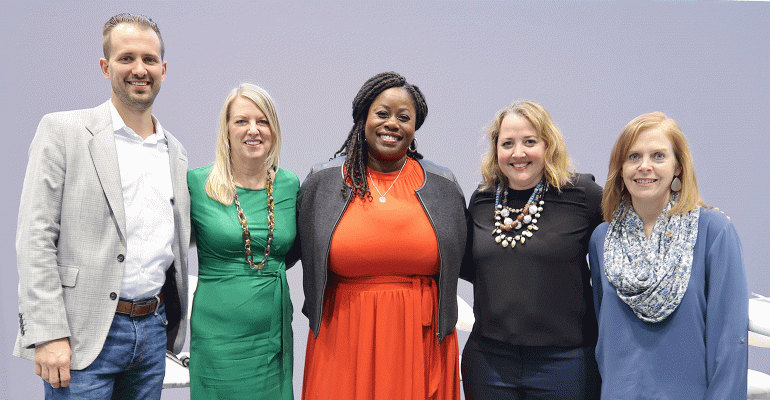This is part of NRN’s special coverage of the 2019 NRA Show, being held in Chicago, May 18-21. Visit NRN.com for the latest coverage from the show, plus follow us on Twitter and Facebook.
Creating a workplace that makes both workers and guests feel comfortable and safe takes focus and intention from the corporate leadership, panelists at the NRA Show said Monday.
Buffeted by everything from racial incidents to claims of sexual harassment, the restaurant industry has recently seen its share of workplace-culture potholes.
“It’s not that this conversation hasn’t been happening over the last 10, 15 or 20 years. It’s now that we have so much more media attention to it,” said Nicole DaCosta, senior manager for learning and development at Dallas-based Brinker International Inc., parent to the Chili’s Grill & Bar and Maggiano’s Little Italy brands.
“People are being forced to have the conversation,” DaCosta said. “They are being forced when a major celebrity or political figure’s face is on page one of the newspaper because they did something that was wrong, inappropriate or … scary.”
DaCosta joined Michele Lane, director of field training at Newport Beach, Calif.-based Chipotle Mexican Grill; Kendall Ware, president of chief operating officer of Oklahoma City, Okla.-based Orange Leaf Frozen Yogurt; and Elizabeth O'Brien and Maggie Fiorentino of the National Restaurant Association on the show panel titled "Inside Out: Workplace Culture and the Guest Experience.”
DaCosta noted that videos of inappropriate comments or employee actions can go viral in a matter of minutes or seconds but require months or years to repair the damage to a brand’s equity and goodwill.
However, she noted, “more and more solutions are coming to the forefront,” including programs and organizations that can help workplaces discover techniques and tools to improve workplace cultures.
“It’s not a matter of ‘if’ but a matter of ‘when’” some event will occur in a workplace, DaCosta noted, so businesses need to work on strategies to be ready for the events.
Panelist offered a number of suggestions for improving and preparing workplace cultures to deal with potential incidents, including six standout recommendations:
Create an open environment. Ware of Orange Leaf said companies need to make workers feel comfortable to communicate when problems happen. Sometimes, he said, you need to “fire fast” when an employee is violating standards.
Tailor management training. Lange of Chipotle said that oftentimes management training programs lack soft-skills development. “That’s where we need to develop programs better,” she said, “giving the teams those soft skills — or ‘power skills’ — to help them do their jobs. Part of that is having difficult conversations.”
Watch terminology. In the hospitality business, Ware said he thinks the word “customer” leads to an incorrect perception that the worker’s interaction is transactional. “In the restaurant business, it’s all about having guests,” he said, and those guests should be treated with a warm welcome and attentive service.
Understand the communities you are serving. “Yes, we want to train on the guest experience,” DaCosta of Brinker said, “but it’s also how we understand the people who work for us and how they reflect communities.”
Make training memorable. Making training modules visual will help training stick with the employees, Lange said. “When you are training your trainers,” she added, “train them to recognize people learn differently.” Lange also said Chipotle is providing “teaser videos” to heighten interest in training for upcoming programs to generate excitement. Ware recommend the training be relatable and shared in “bite-sized chunks.” DaCosta suggested using employees in training videos, which is relatable and “nice and friendly on our budget as well.”
Seek help from other programs and organizations. Lange said two good sources of information about ways to improve workforce culture and training can be found with the Council of Hotel and Restaurant Trainers, or CHART, and the new ServSuccess career development program from the National Restaurant Association.
With 50% annual turnover, one audience member said restaurants are seeing entirely new staffs every two years, and it’s a challenge to train them effectively.
“It’s on ongoing conversation,” said DaCosta. “It has to continue being integrated into all messaging. As you are building out your training programs — whether you build, buy or borrow — make it the gold standard of how you train from when they get hired to the moment they get on the dining room floor.”
O’Brien of the NRA said workplace training can help inoculate restaurants from negative incidents.
“We’re talking about creating a culture that’s free from sexual harassment, bias and discrimination,” O’Brien said.
Contact Ron Ruggless at [email protected]
Follow him on Twitter: @RonRuggless

